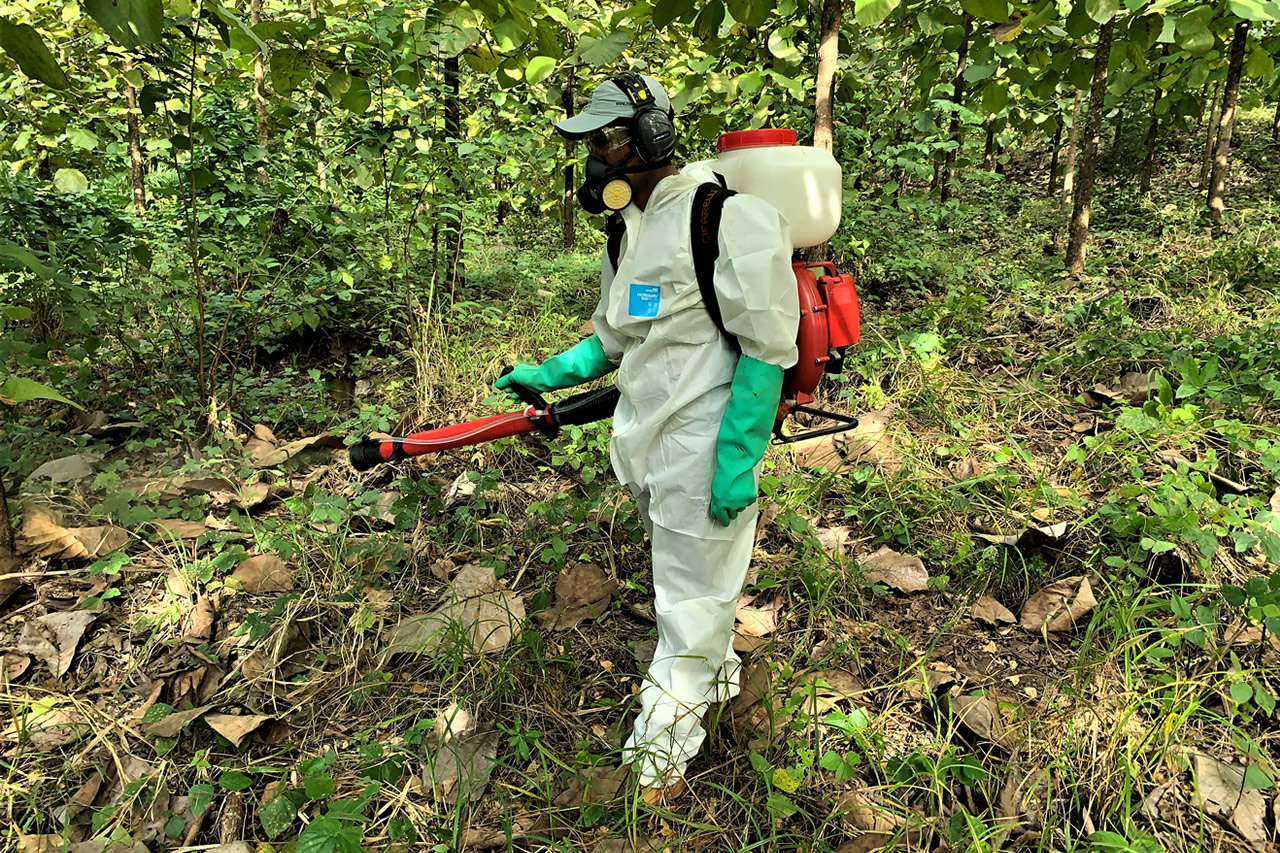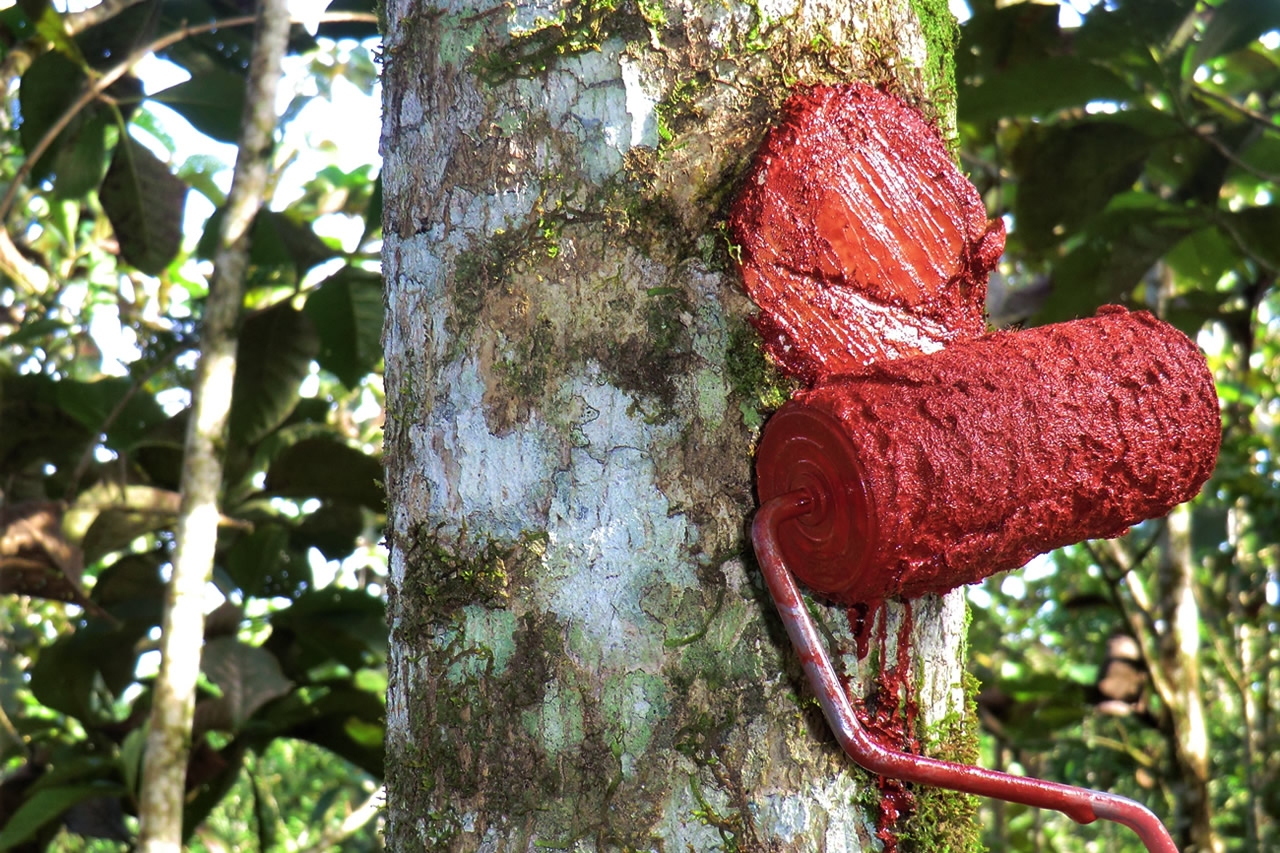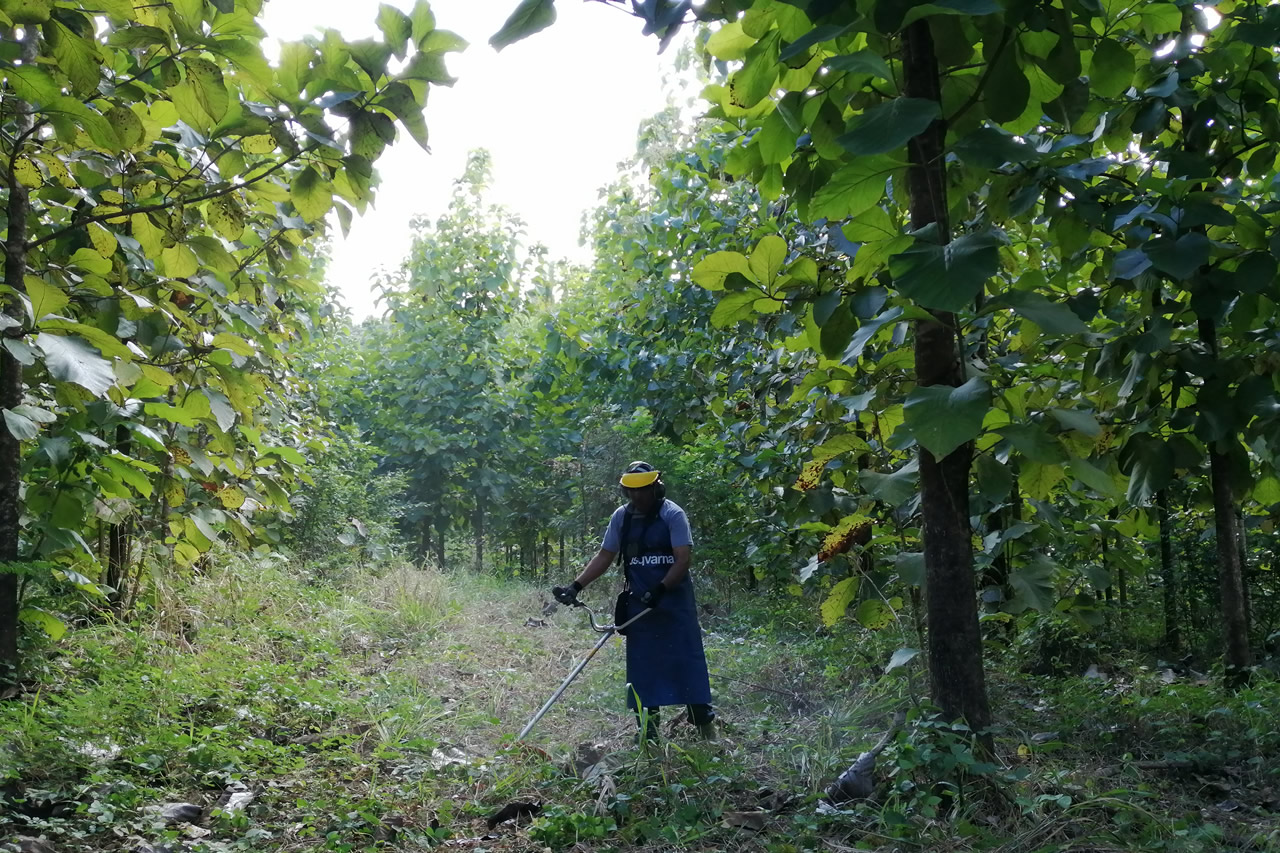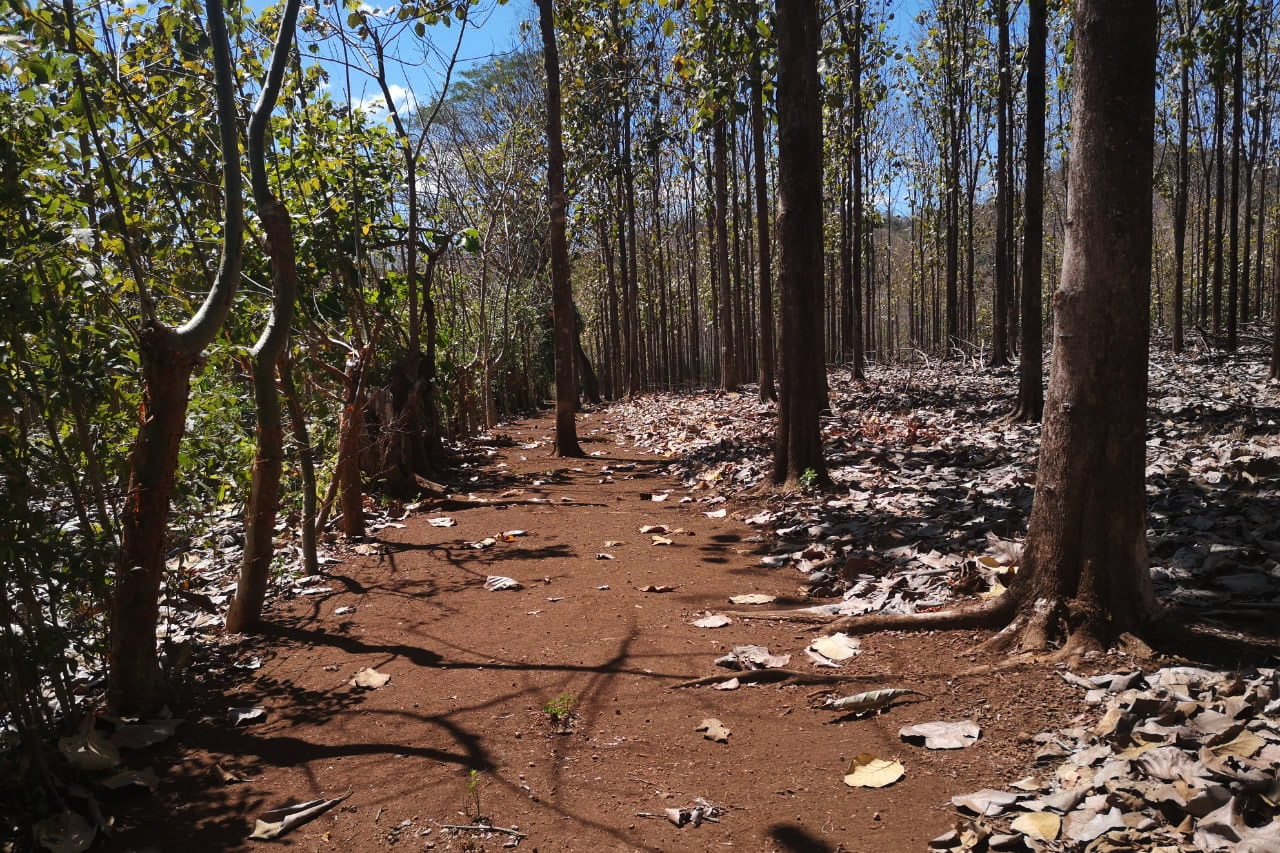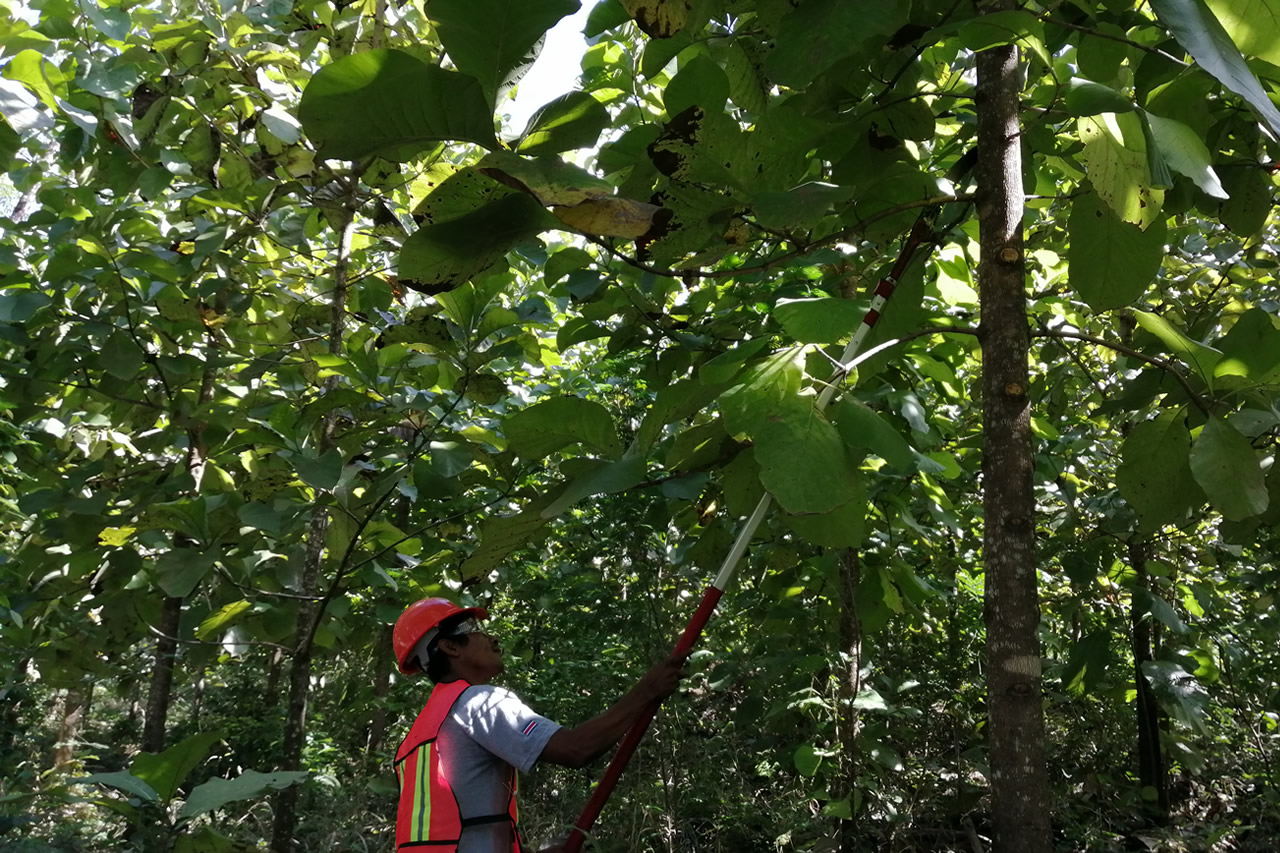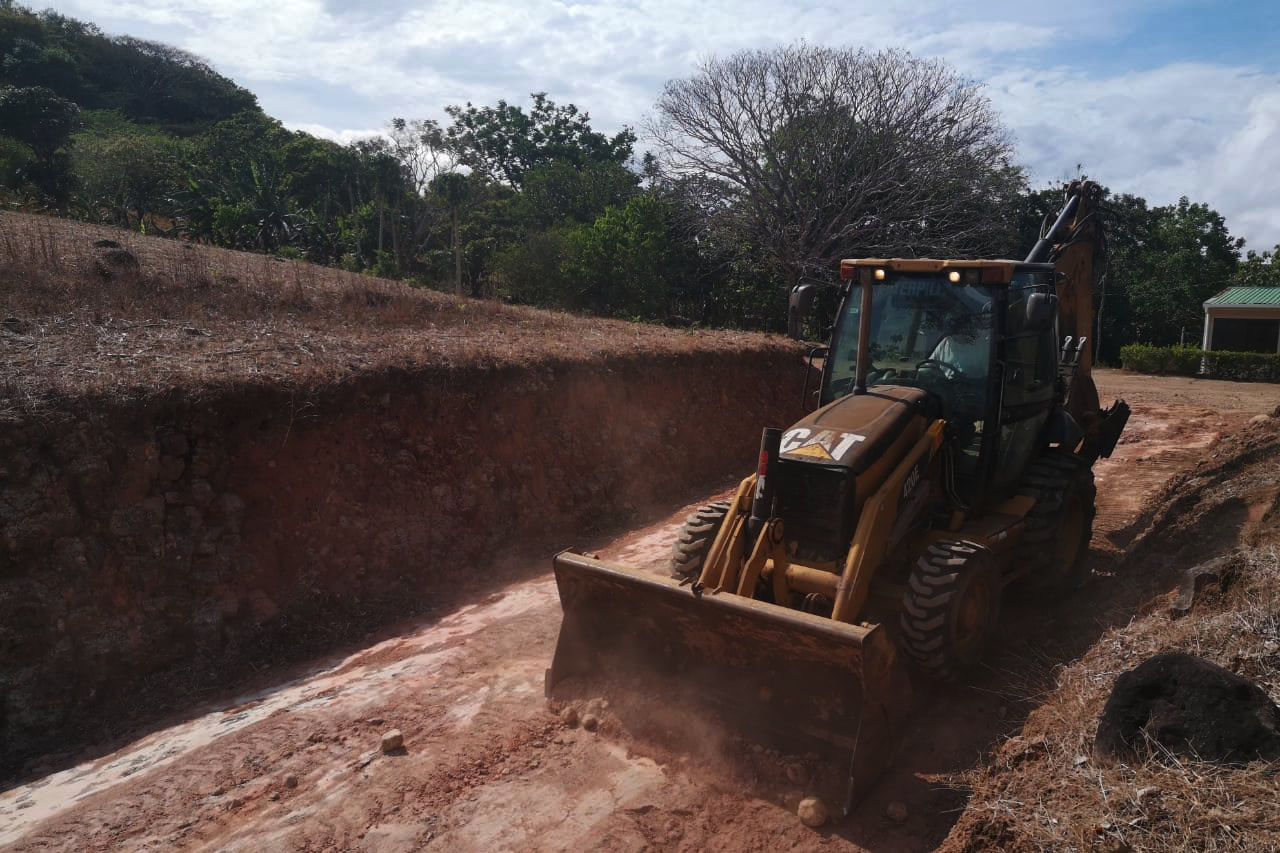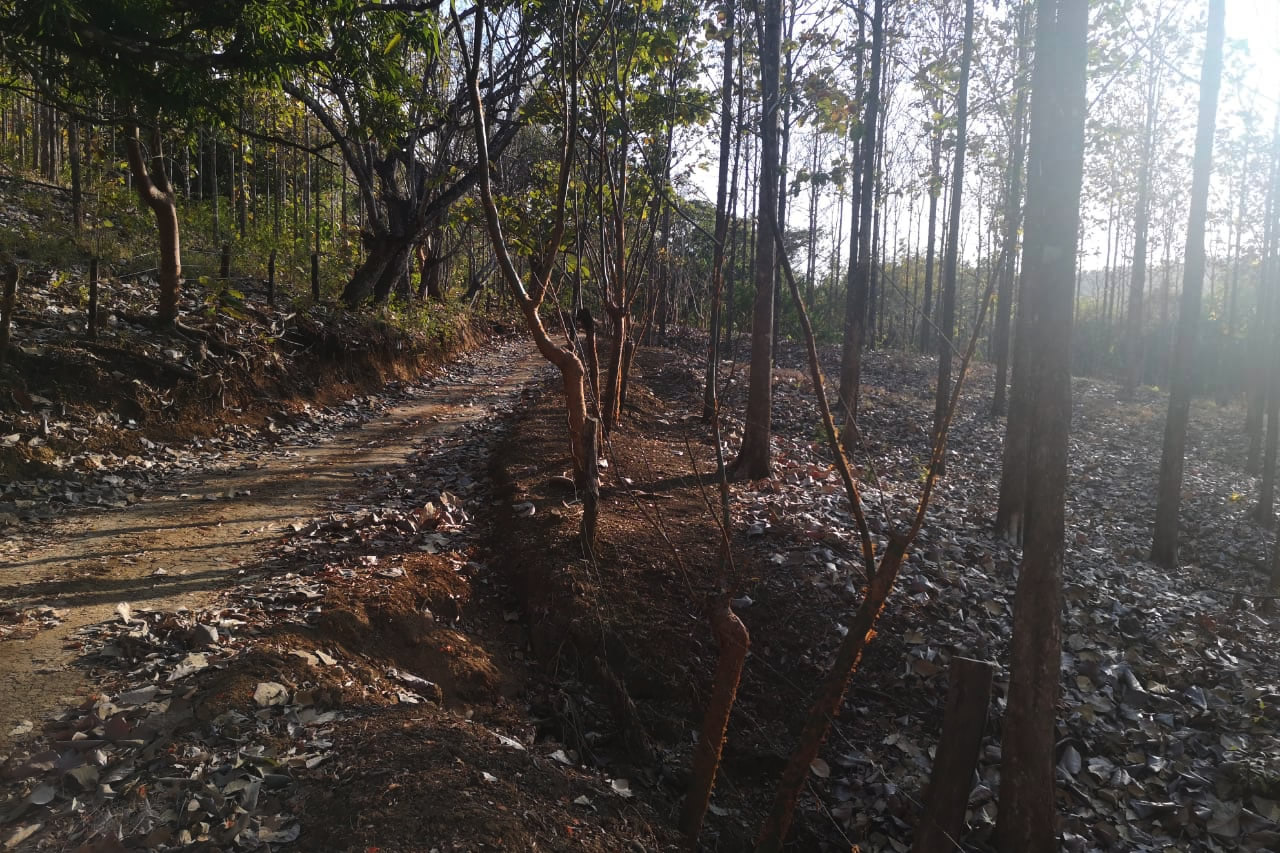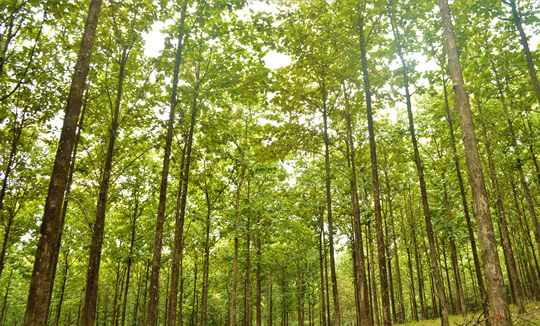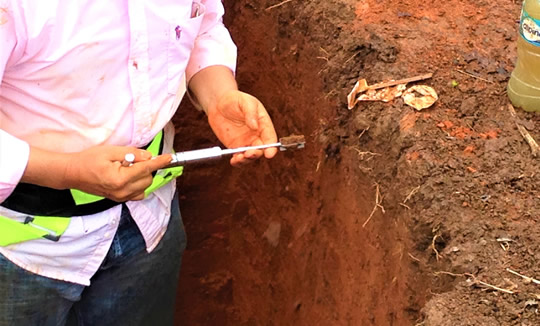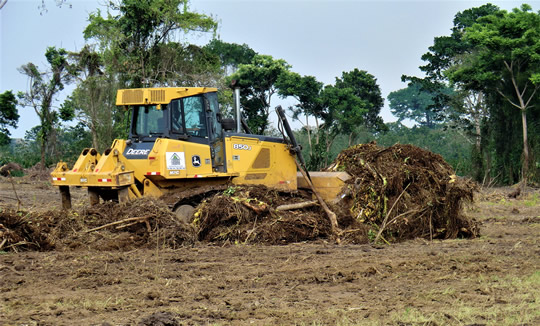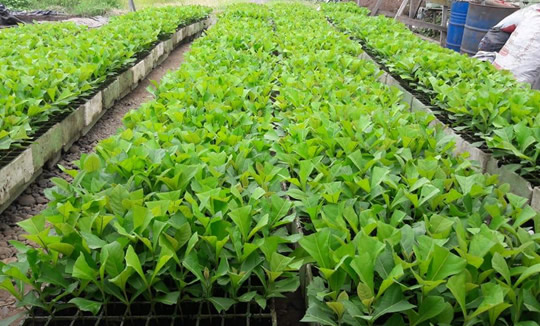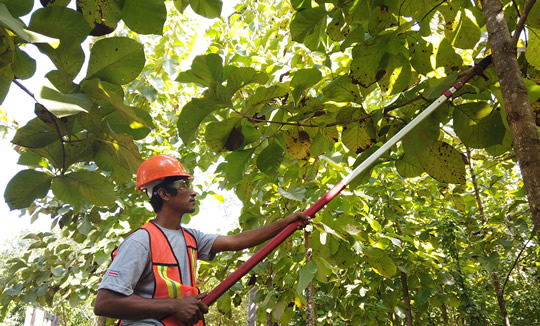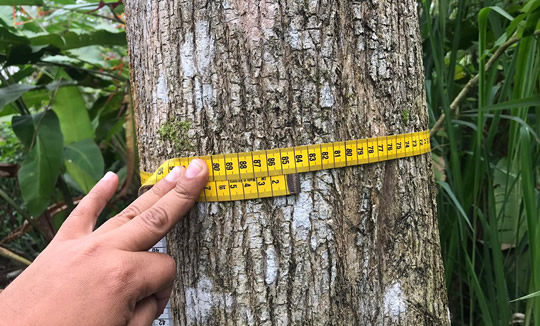Service description
Plantation maintenance and management activities must be carried out in a timely and technically directed manner. Many failures occur due to the absence of these activities despite having heavy investments in the early stages of farm purchase, site preparation and purchase of genetically improved material.
The maintenance and management activities that RCR carries out annually adjusted to the conditions of each plantation are detailed below.
1. Weed Control
Any plant found within the forest plantation that is not the "planted timber species" and that becomes a competition for nutrients with the tree is considered weed. The control of these corresponds to their removal manually, mechanically or chemically, a timely weed control can increase the yield in terms of growth by up to 40%.
1.1. Manual rounding up
Rounding up is understood as the activity in which all weeds are eliminated in a circular area of a defined radius that surrounds a plant without causing damage to it. It can be cleaned with a knife or chemically (herbicide). The objective is that the soil gets completely exposed and the moment to do it is when the surrounding weeds represent an obstacle to the proper development of the plant. This weed-free area will benefit for future liming or fertilization (fertilizer applications).
1.2. Chemical rounding up
It consists of using herbicides for the elimination of weeds for a longer time (from 2 to 3 months) that compete aggressively with the productive plant, the use of glyphosate and Melsulfuron is technically accepted (a shield must be used to protect the plant). The application is done manually using back pumps and safety equipment to protect the worker and the plant.
1.3. Manual Control or mowing
This is a complementary activity which objective is the elimination of the competing weeds that are obstacles for the adequate growth of the trees in the project. This activity is well known and it basically consists of the removal of weeds using a "machete". The height of the cut depends on the objectives, however, in the case of forestry a low cut is recommended (almost soil exposed).
1.4. Mechanical control or mechanical mowing
This involves the use of an electric scythe, which cuts the brush at a higher speed than the "machete" thus increasing efficiency levels. As long as the mowing conditions are normal, the use of the electric scythe does not require exposing the ground. You can leave 5 to 10 cm of weeds. During this activity the use of safety equipment by field staff is mandatory.
1.5. Chemical Control or Chemical mowing
The application of herbicides (Glyphosate for grasses and Melsulfuron for broadleaf) is considered the main alternative to eliminate weeds for long periods of time, up to 3 interventions per year are carried out in 100% of the plantation area. It is worth mentioning that RCR, with the aim of achieving greater effectiveness in weed control, first performs manual or mechanical mowing and then chemical mowing.
2. Sucker pruning
This consists of the removal of suckers from the base that appear in the trees. It is a practice that must be carried out at the right time since the quality of the first log and the maximum use of nutrients and inputs (fertilizer) by the tree depend on this. The sucker pruning will be carried out with pruning shears or handsaw (depending on the thickness of the child) that allow a clean cut, trying to do as little damage as possible to the plant.
3. Fertilization
It is a complementary activity that seeks to supply the nutrients that trees require according to their absorption capacity, soil condition and age of the plantation. RCR carries out the application of fertilizers in the quantity and formulation that the project requires, for this, we use existing scientific information in the country and we also encourage our clients to carry out their own soil analysis, helping them with field work.
4. Pruning
In a practical way it can be defined as the removal (elimination) of tree branches by mechanical means (tools) with the aim of obtaining the highest quality wood (free of knots). This activity is considered a silvicultural operation that directly affects the performance and quality of the trees, therefore, RCR plans and supervises this work so that it is carried out at the right time and in the correct way.
5. Application of sealant
The sealant is a product that is applied directly on the pruning point, the objective of its use is to prevent the entry of fungi (it has copper sulfate) and to inhibit the appearance of a new regrowth.
6. Pest and disease control
Pest and disease control is a permanent activity carried out by RCR with its field and technical personnel.
7. Thinning
Forest thinning consists of gradually reducing the number of trees in the plantation to concentrate growth on the best individuals. Initially, many trees are planted to induce competition and thus make them grow in height, straight, with a reduced crown and a good commercial stem; however, the competition for water, light and nutrients should not be excessive since this can harm the good development of the trees and the appearance of pests and diseases.
8. Regrowth control
Of the timber species used in Costa Rica to establish forest plantations, there are several that have the ability to regrow. Within forest plantations, sprouts become a problem from a management point of view, since they become a source of nutrient extraction and space occupation.
9. Infrastructure maintenance activities.
Infrastructure maintenance activities are carried out during all the years of the project and these are described below:
9.1. Fence inspection and repair.
RCR staff make tours of the property's boundaries, mainly on the areas where the project adjoins public roads and forested areas, since livestock and people entering generally occurs at these points and can cause damage to the project.
9.2. Firewalls
A band of at least 4 meters wide will be made along the perimeter of the plantation and next to the fences in order to prevent the spread of possible forest fires.
9.3. Maintenance of internal roads
Specifically, road maintenance tasks concentrate on performing a road scraping once a year during the dry season. During the winter season, road maintenance activities are concentrated on the construction of drains, mainly in areas where roads have slopes.
10. Final Harvest.
RCR has the trained personnel, tools and machinery necessary to cut, strip, moor, drag, stack and load the trees to be extracted. It is important to mention that RCR is a company that is able to sell and export wood to international markets.

